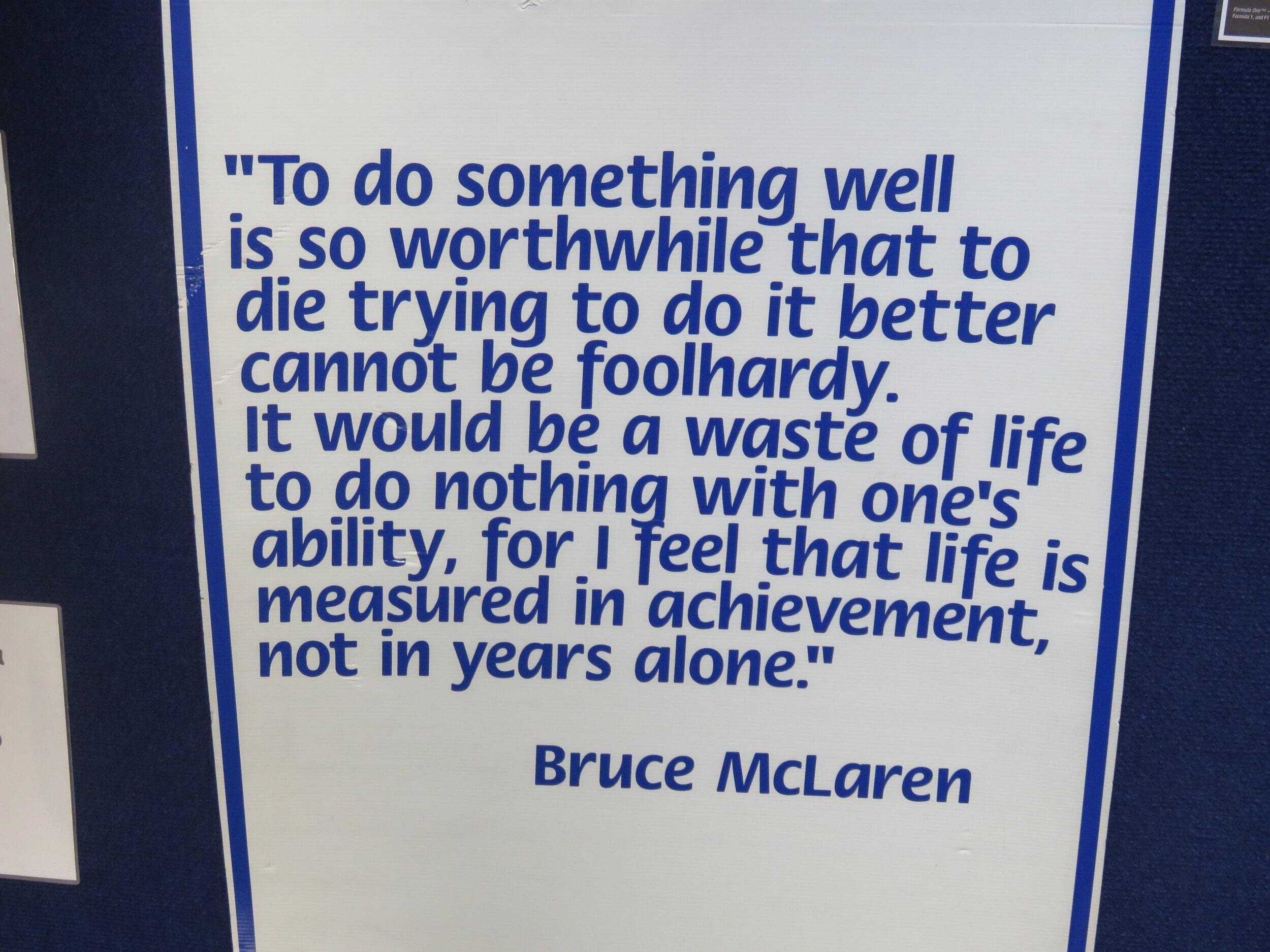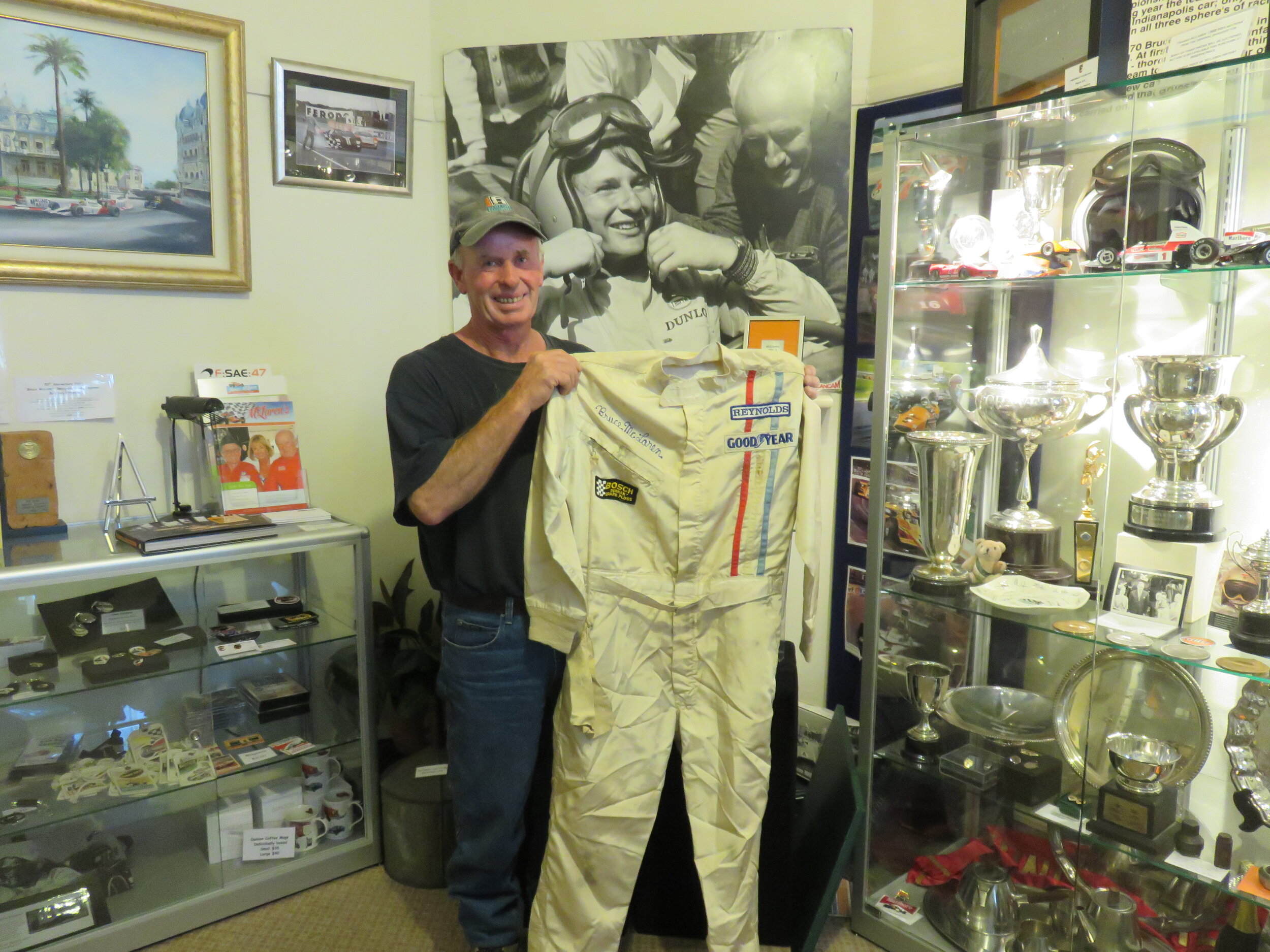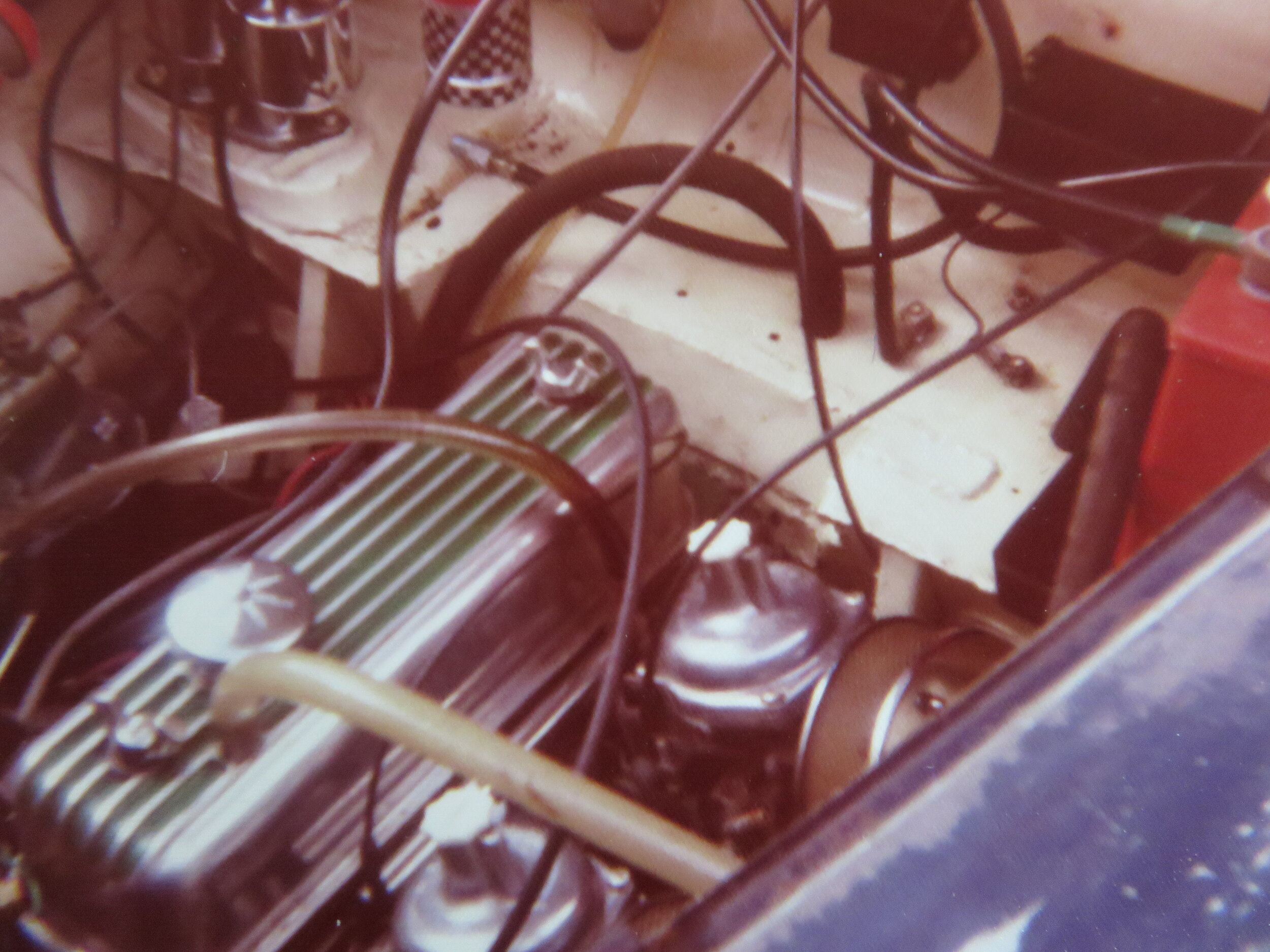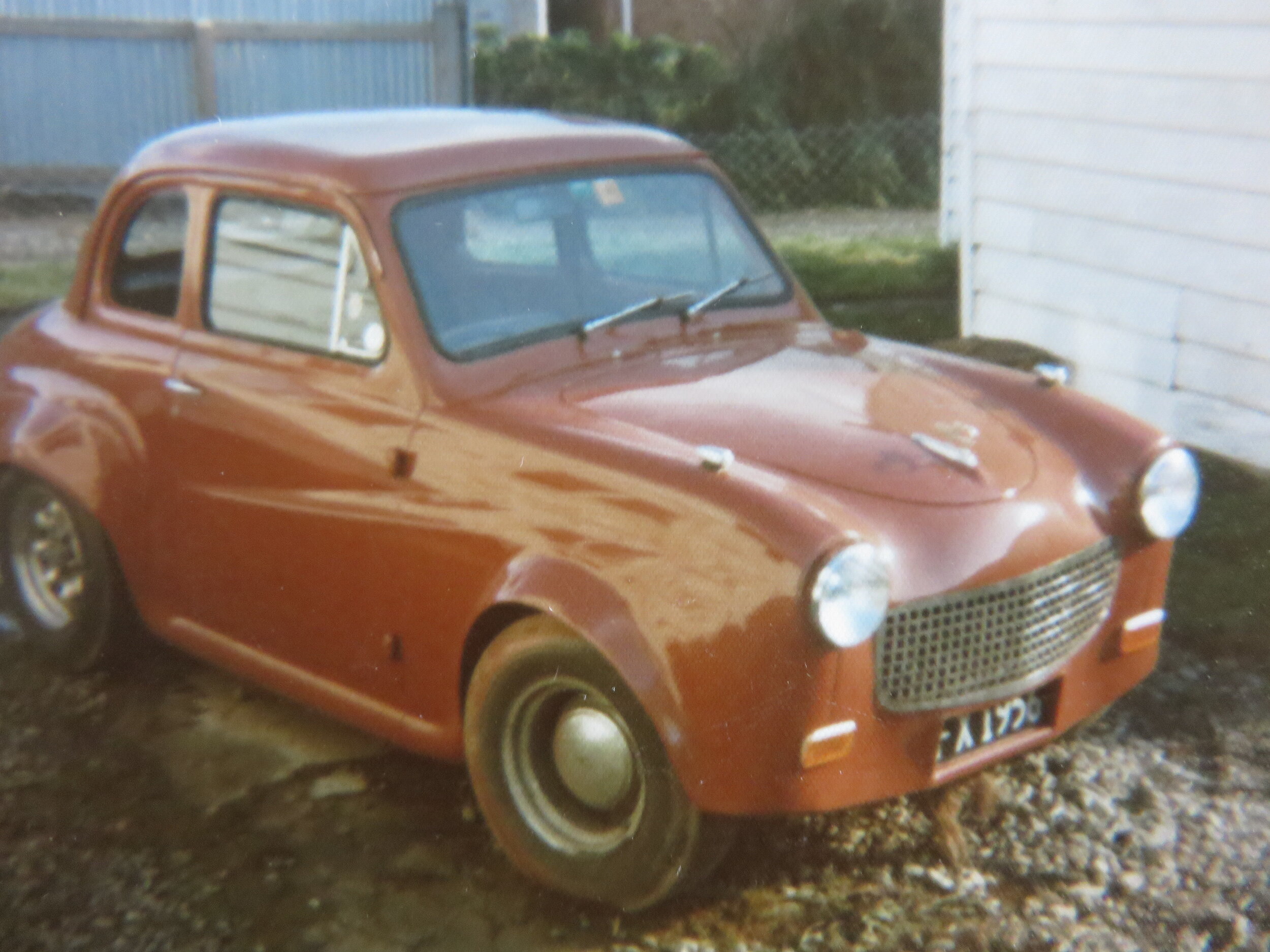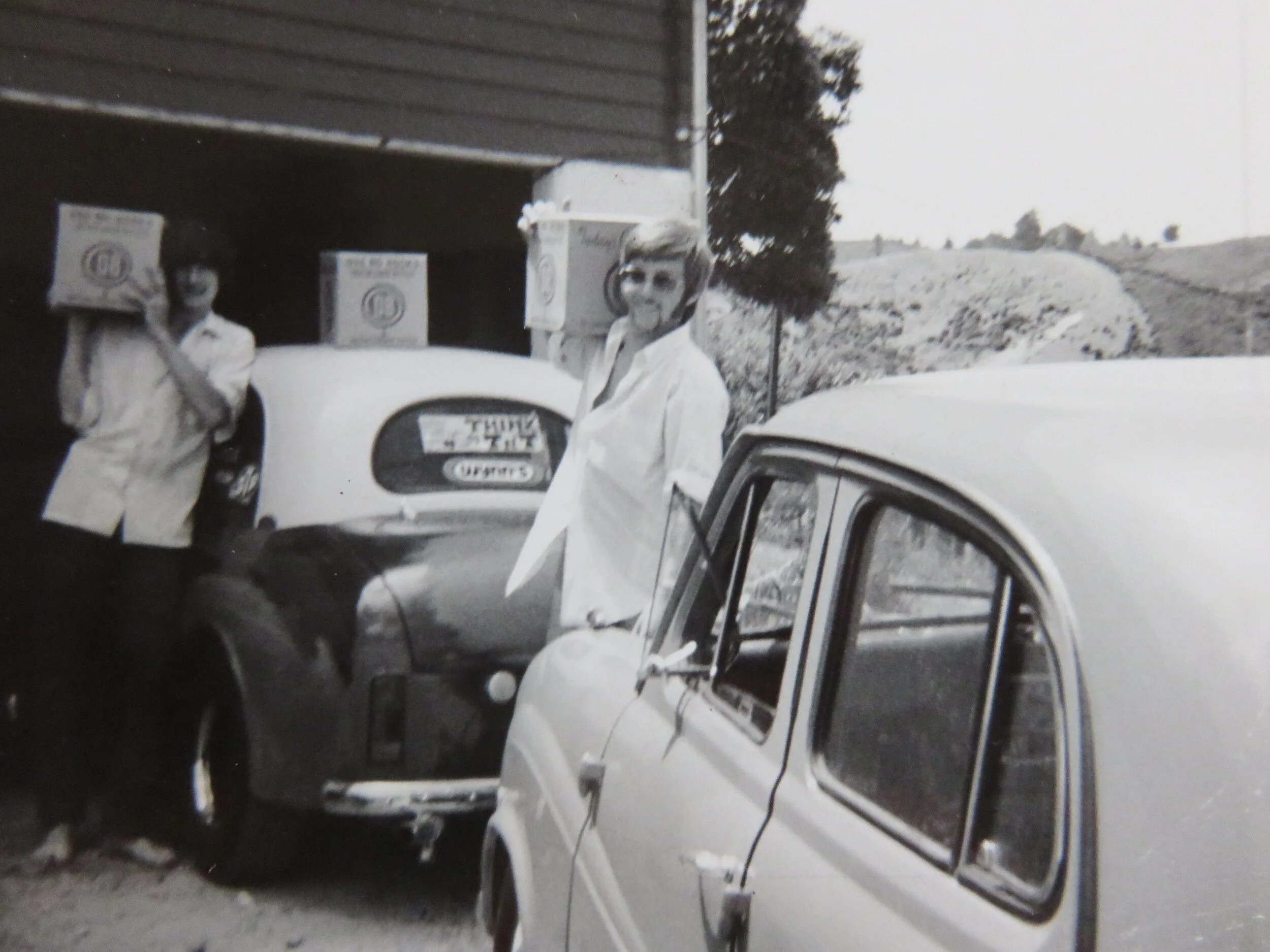My Life with Austins, other Classic Cars, and virtually anything with wheels on…

I had a strong interest in cars at a very early age, probably around seven or eight years old.
At that time my father owned a 1955 Austin A90 Westminster, which I loved to ride around in. It seemed to have a nice luxurious ride, with plenty of room inside. I also loved the look of these cars.
At the same time my mother owned a 1956 Austin A30 2-door. A bit more “squashed” for room, but still fun to get around in. With the A30 being only a year old when mum purchased it, I still remember how this wee car smelt inside, with that rather sumptuous, nearly new interior.
So, two great British cars were now imprinted on me at an early age. This imprinting would never leave me, and much later I would own both of these models myself.
To get my own “thrills on wheels”, I began building “soap-box” style carts, which I ran down the hills near our home in Invercargill. There was no problem gathering up the timber and tools required to make them, with my father being a builder.
I raced these carts in the annual City Soap Box Derby’s and continually developed them, with my own ideas for brakes and steering, etc. These carts went from small models with pram wheels, to very long, large carts with bicycle wheels, which if the hill was long enough, could get up to tremendous speeds. The last development I did to these carts, was to rig sails on them, similar to today’s land yachts. This allowed me, in the right conditions, to also travel uphill, and at times reach speeds almost equivalent to the odd car that might be around me.
As kids, we often visited farms that were owned by relatives or friends of my parents. Of course, all farms had utes and country kids began driving these utes very early, so they could help with feeding-out, or shifting stock. One of these farms had an Austin A40 Devon ute, and by the time I was between 10 and 11 years old, I was driving this ute quite regular, helping with farm chores. So, this was the vehicle I learned to drive in, and yes, because most of the drivers were young and small-built, it actually had wooden blocks wired to the pedals, plus the big cushion to put between yourself and the back of the seat.
During the early/middle 1960s, I used to go to our local car racing circuit at Teretonga Park, near Invercargill, with my father or family friends. I absolutely loved car racing and especially saloon-car racing. The big meeting every year was the International Meeting, at the end of January, which was part of the Tasman Series for open-wheelers. This series was shared between NZ and Australia and included many of the current Formula One drivers, who came down-under, during their Northern Hemisphere off-season.
A lot of the big names in Formula One attended Teretonga over these years, including Jim Clark, Jack Brabham, Bruce McLaren, Denny Hulme, Jo Bonnier, Graham Hill, Phil Hill, Piers Courage, and Roy Salvadori. The Tasman Series was a great gift to Kiwis and Aussies at the time, with Formula One being mostly raced in the Northern Hemisphere. By the mid-sixties, 13% of the total population of Southland Province was at this annual meeting, and it is said that for quite a while, it was the “most attended” short circuit in the world.
During these years I became an ardent fan of our own Bruce McLaren, who went on to construct his own cars, and create his own Formula One Team, which still exists today. I sucked up every bit of knowledge I could find on him, through newspaper and magazine articles of the time. Bruce had a huge work ethic and tremendous organisational skills. He once said of racing cars: “Luck has nothing to do with it, it’s all in the preparation”. I have tried to live by that ethos myself, all my life.
The first image below is a quote from Bruce McLaren. I think this says it all. A quote from an interview. By the time Bruce died in 1970, aged 32, he owned his own Formula 1 team, employing 60 people. He was designing, building and driving his cars, as well as doing the same for the Can-Am Series.
The second image - When I took the Lada to Auckland, I visited the Bruce McLaren Museum, which was in the original McLaren (family's) Garage, in Remuera.
By 1966, my father had given up building and was now a local building inspector, attached to the Education Board, involved in over-seeing the building of new schools and alteration and repairs to older ones. He had a Government supplied car, so the family car sat at home most of the week. Since the need for two cars wasn’t there any more, he asked me if I wanted to buy my mother’s A30. This came about some time in 1967, when I was nearing my 15th birthday. I couldn’t wait to get my hands on it, although I was a couple of months off being old enough to get my driver’s licence.
After purchasing the A30 and getting my licence, I knew this was my “ticket to the world”…well, the South Island of NZ anyway. I took it to school and ran around in it in the weekends, on the now very tired 803cc engine. Not long after, I installed a brand-new 948cc long-block, which I bought off the local Austin dealers. By 1970, I had developed this engine quite a bit, and had made body modifications to accommodate widened wheels, and as was the trend of the time, had put my own mark on the car, with customising its looks. In 1972, I purchased the whole drivetrain from an A30 circuit-racer and installed it into my A30. I purchased two brand-new 1 3/4” Stromberg carbs for the 1622cc MGA engine, and got hold of a set of Sprite front brake discs to bolt on. Other than that, the change-over was almost completely from the race-car. I then set about gradually finishing off the body. I owned the A30 in this configuration till 1974. It was a fun to drive and very fast.
Details about the below four photos of my A30, over the years:
Stage one, 1967...repainted royal blue and white, with brand-new, standard 948cc "long-block" installed.
Stage two, 1970...some customising going on, plus 948cc engine had been modified to include head work, Weber carb, road cam, extractors, etc.
Stage three, 1972...1622cc running gear installed.
Stage four, 1974...final stage. By the time this photo was taken, the car had a new owner and I had gone over to '50s American cars.
After the A30 was sold, I moved into ‘50s and ‘60s American cars, first owning a 1955 Chev, which I bought off a work-mate for $250. It was still a good original car and ran a 235 cu in Blue Flame six. I was surprised at the pulling power of this car, which was not far short of Chev’s 283 cu in small-block V8 at the time, and almost equal to the 265 cu in edition.
After the Chev, I went over to the Fords of the period, and owned several Ford Customlines and a 1965 Fairlane Compact. Most of the Customlines I owned were in really good original condition. With a couple of them, I was only the second or third owner. They could be bought really cheap too, with all of them coming in at between $500 to $750. The last Customline I owned, a 1955 model, which was in exceptional order, I kept for 15 years. During that time I changed the original running gear for later model stuff, including 302 cu in Windsor V8, 3-speed Mustang column-change g/box and a narrow Mustang 8’’ rear end. I also adapted Falcon discs to the front. I repainted this car too, as I didn’t like the original drab grey and teal colour scheme.
Through most of the time I owned this car, I was busy raising a young family and working to pay off mortgages, etc, so the Customline didn’t get a lot of use, and eventually I decided to sell it in the late 1980s. This car is still owned locally today.
The last American car I owned, a 1955 Ford Customline
Then came a long hiatus from classic cars till 2004, when I purchased a 1979 Holden Torana UC, which I came across while working as a roadmarker. The original 202 six had blown up and strangely, was replaced with a Starfire 4 cylinder engine that was also sick, not to mention the original M20 gearbox that had no third gear. But this car was in exceptional condition body and interior-wise, and it was only the car itself that I wanted, as the running gear could be easily replaced. One bonus was, that there was an early 5-speed Commodore gearbox in the boot, so that would hopefully sort the gearbox problem. I had always loved these giant-killing little cars, since watching Bathurst through their heyday in the ‘70s. Although the UCs had no race history and looked a bit different to their famous predecessors, I knew I couldn’t afford to be that fussy, as they were essentially the same car, and the more liked and famous LX and LH models, had mostly already been gathered up, and even if you could find a good one for sale, you were really going to have to pay for it!
Over the next year or so, I put new ‘worked’ 202 running gear into it, used the ‘free’ 5-speed, and put 3.08 early Commodore gears in the diff. It is now a great open-road car, with good torque and very economical, with the high gearing. They are also very good handling cars for their time, with a comfortable interior. A real pleasure to drive.
Our 1979 Holden Torana UC, which we have owned for 15 years
Then around 2015, Michelle thought she might like to get a classic car of her own. She still had a hankering for Ford Anglias, as she had owned one when she was young. So, I set about looking for a suitable Anglia to purchase. Well, I didn’t realise how popular these cars had become, and of course, demand drives price. A good clean ‘patina’ car, that would still need to be painted, have upholstery work done, and probably engine and other stuff too, was going to set you back 8-10 grand, before you started. Add to it the work that needed done, and you were looking at closer to 20 grand than 10.
So, we thought we would leave the Anglias in the meantime and have a look for other small classic cars, to compare real value. After a day of trawling for small classic cars on my computer, I came across, what looked like a very good condition A40 Farina, that was being sold through a car sales in Palmerston North, and it only had $5,500 on it. I went through the set of 20 good photos that had been put up, showing every nook and cranny of the car and thought to myself, gosh, if this Farina is as good as it looks in the pictures, it’s an absolute bargain! Then I noticed that the car had been sitting at the car sales for a year, and immediately thought, why hadn’t this apparently quite mint Farina sold yet?
I decided to wait for Michelle to get home from work to see if she liked the car first, as it certainly didn’t look anything like an Anglia, and also it was painted pink! In the meantime, my head was racing. I thought this is way better value than pursuing the Anglia thing, and I still had quite a bit of A-series mechanical gear that I had been carting around for the last 40 years, that could be useful for spares.
When Michelle arrived home I showed her the Farina, and asked her what she thought, especially as opposed to the Anglia. She immediately said she really liked it, especially with all the chrome, and thought it was way more stylish than an Anglia. Then my question was: “What about the colour?”. She said she loved it and thought it made the chrome stand out. She then asked me what I thought about the colour? I told her I liked it too, for the same reason.
I told her I was a bit ‘miffed’ about why it hadn’t sold over the last year, when it seemed such a good car, but would now phone the car sales to see if there was a particular reason for that. I phoned the car sales and the salesman that answered said the Farina really was as good as it looked in the photos. Also the engine had been reconditioned, it had had some suspension work done and the steering box had been reconditioned, so that was all good to hear as well. He said it went well and drove and rode really well too.
Then I popped the question about why, if it was so good, had it been with them for a year and hadn’t sold? I was stunned when he gave me the answer: “It was the colour”. He said the car was part of a local classic car collection, which included 18 British cars of various makes and types. The collection was being sold by the widow of the owner, who had suddenly died. He said she was friend of the car sales owner, and had asked him if they would help her dispose of the collection. He said the Farina was the ‘pick’ of the whole collection, condition-wise, and that if it had been up to the women who were interested in the Farina, it would have sold on the first day. But Kiwi male chauvinism is obviously still alive and well, and no way were their partners going to have a pink car up the driveway. Unbelievable!
The car salesman said the Farina had started at $7,500, and was now down to $5,500, because the woman just wanted the sale of the collection wound up. I thought: Wow, $2000 saved just because the car was pink! I told the car salesman I would have gladly paid the $7,500 for it, if I had been looking a year ago. He said: “So would a few other people, if they’d been allowed to.”
Michelle, with her pink 1960 A40 Farina, after winning her first trophy with the car
Prior to discovering the Farina, I had been getting a Lada 1500 road-worthy, to drive to Auckland for my daughter and her partner. It had been left lying in a shed in Invercargill for seven years and needed quite a bit of work to get it back on the road, and I was now nearing the end of this project. The timing of finding the Farina would work out well with taking the Lada to Auckland, as after delivering the Lada, I could come back to Palmerston North and pick up the Farina and drive it back to Invercargill.
A week or so later, with the Lada all “stickered” up again and around 400km of non-stop testing done, to make sure all was good, I headed for Auckland. On the morning of the fourth day, after a leisurely trip, I arrived in Auckland. The Lada had run like a clock all the way, much to the surprise of many “doubters” back in Invercargill. Once again, in the words of Bruce McLaren: “Luck has nothing to do with it, it’s all in the preparation”.
On the way up to Auckland, I called into the car sales in Palmerston North to look over the Farina and take it for a drive. It definitely was as good as portrayed. Prior to purchasing it, the car sales owner said the owner of the car had told him, that if I bought it, I could have $500 off to help defray my expenses of getting the Farina home. So, $5000 was the final price…bargain!
After a week in Auckland, I drove back to Palmerston North in a car sales ‘loner’ car which had been dropped off to me. After switching my gear over to the Farina, I headed for Wellington to catch an over-night ferry across to Picton. The two earlier over-night ferries were booked out, so I had to settle for a 2.30am sailing, but it didn’t matter, as I was on my own and there would be time to look over the Farina and do some fettling where needed, starting with the fan belt which was a bit loose. By the time 10pm came, everyone left on the wharf realised they must be on the late ferry, and we drew together and introduced ourselves. A lady from Nelson had a huge tupper-ware box of cake, which combined well with the flasks of coffee that most people seemed to have with them. By midnight a few were starting tire and were worried that if they went to sleep they would miss the ferry, but the ferry workers told us not to worry, they would wake us up when it was time to load the cars.
With the cars loaded, we headed out of Wellington Harbour. I think I was “out to it” as soon as we hit the swell in Cook Strait and didn’t wake up till the ferry was reversing into dock at Picton, at 5.30am. With the Farina off the boat, I headed straight to Blenheim, to gas up and head south. The Farina was running like a clock and by mid afternoon I was down near Timaru, and starting to ‘fade’ a bit, from my long couple of days on the road. I found a rest area and pulled in. I set the alarm on my phone for an hour and a-half ‘kip’ and was immediately asleep.
When the alarm went off, I got out of the car and walked around a bit, to get my equilibrium right, then hit the road again. I gassed up for the third time in Timaru, where like the other stops, I still had 1/4 of a tank left. I reckoned I would need one more gas-stop around Dunedin to get me home. It was getting dark by the time I went through Dunedin, to gas up at Mosgiel for the final time. At 10.30pm I arrived back in Invercargill…job done, Michelle’s Farina was home. I then realised this was the second time I had driven the whole length of the South Island (915km) in a day. The first time was 44 years earlier, also in a “baby Austin”, my first A30. The Farina had run better and better as the trip progressed, after its long lay-off, and when I worked out the gas-milage, it was 41mpg, right within the makers specs of 40-45mpg.
Shortly after returning home with the Farina, a friend from the local Vintage Car Club turned up one day and asked if I would be interested in buying his 1952 A30 AS3. He had part-traded it in the sale of a vintage motor-cycle, and was now wanting the money out of it, to continue restoring another motor-cycle.
I had known this car for a while and knew it was a very good example of the first A30s. I still had a hankering for these wee cars, since owning my first A30 in the ‘60s. Then I thought, do I really need another classic car at the moment? The A30 had recently had a 1275cc A+ engine installed, coupled to a Marina gearbox. Other than what I could see, I didn’t know much about it, apart from the brakes needing a complete renewal. Still tempted, I took it for a drive and it rode and steered really nice, probably helped by recent new shockies and some steering and other suspension work. So, I asked about a price, and my friend said he just wanted $3000 back, out of the new upholstery job. The price was too low to turn down, for such a rare survivor car, in very good condition. So another one went into our growing stable.
This early A30 had survived so well, mainly because it had been in the one family from 1952 to 1994, came from Canterbury, and was always garaged. Unfortunately, since its original family ownership, it had had a few “butchers” at it. They had set many “traps” with poor workmanship, and it took a while to iron all these out. But over time I eventually got to the “end of the tunnel” and wasn’t so reliant on having a cell phone and tow-rope with me. Examples of “mischief” were: wrong distributor cap clamps, which allowed the cap to “float” under revs, interrupting spark and timing. A brand new distributor rotor had been forced onto the distributor shaft, which had surface rust on it, thus increasing the shaft diameter and causing a fine split in the rotor, which filled with dirt and tracked the spark away. This “trap” caught me out a wee way from home, and because I had previously seen the rotor was new, I wasn’t carrying a spare for that, but at least I was carrying a large screw-driver to be able to lever it off and find the problem. The cell phone and rope came in handy on that occasion. Then I noticed the car had Metric bolts everywhere in it, for some strange reason. A lot had been screwed into SAE cage nuts and were barely holding on. I received a cut eyebrow one day when I bumped the coil. Because these coil clamps often have a bit of tension on them, when bolted down, it flew up from the bulkhead and got me good. Both the SAE cage nuts were virtually stripped out, with the Metric bolts in them literally hanging on by a thread!
With a lot of re-tapping of threads and many new bolts later, I eventually weeded all the “foreign” stuff out, and returned the car to its original specs in that department.
Because I knew that only 4700-odd of these AS3 cars were built in the ’52 production run (May to December), I deduced that not many would have reached our shores originally. I decided to get in touch with the NZ Motor Vehicle Register, to see if I could find out how many were still left on the register. The email ended up on the desk of a very helpful lady, who did a search and was able to tell me, that I had one of only three 1952 Austin A30s left on the register, either on the road, or “on hold”. I thought they would be thin on the ground, but not that thin!
Our 1952 Austin A30 AS3
About a year later, I decided I needed to gear Michelle’s Farina up a bit, to allow it to travel a bit quicker on the open road, while still keeping the engine revs at a comfortable level. Virtually all our original A-series cars in NZ had the terribly low 4.55 diffs in them, except for the occasional Sprites and Midgets. I knew my best bet locally, would be to find a MkII Farina diff, which had a ratio of 4.22, which would allow Michelle’s Farina to travel comfortably at 90-95kph.
I advertised in our local car club magazine, and got a reply from another club member, who lived in a seaside town near Invercargill. He said he had parted out two MkII Farinas years ago, and still had one of the diffs. (I have since located another 4.22 diff from an early Sprite, which is now in the A30, although a 3.9 unit would be better for that car).
So, one Sunday, I went out to Riverton to retrieve this 4.22 diff, accompanied by a 24-pack of beer, which was the purchase price.
On arriving, Neville showed me around his collection of Austins. There was an A40 Devon ute, powered by an 1800cc B-series engine. Next was a very tidy, original A50, which had only done 40,000 miles.
Then Neville wanted to show me his pride and joy, a 1930s Austin 16/6, which was in the big shed. On entering the big shed, there ahead of me was this stunning, completely original 16/6. I couldn’t believe the condition this old car was in. Neville was obviously pleased with my response to his beloved 16/6, and asked me if I’d like to take a ride in it, to which I duly replied “yes please”.
Then out of the peripheral vision of my right eye, I spotted another car in a far corner of the shed behind me. When I turned around, there was a very tidy looking A90 Westminster, sitting covered in a film of dust. While Neville readied the 16/6 for our ride, I nipped over to the A90 to have a quick look, while trying not to appear too distracted to Neville, who was still conversing with me on the history of his 16/6.
This A90 had really grabbed my attention, as I had always liked them, since my father had owned one, when I was a child. It immediately brought back a lot of memories for me, and it was even the same colour as my father’s one. This car was in exceptionally good, original condition, for its age, with very straight, clean lines, and all its stainless mouldings were there, and very straight as well. As good a “survivor car” as you’ll get. The only draw-back was, it had a rather dilapidated leather interior, compared to the condition of the body. But, I guess, if you don’t look after leather, the ”cow” just keeps dying!
By now, we were ready to take the 16/6 out for a drive. I was really impressed with the 16/6. I was a good car for its old technology. It rode quite smoothly, had good brakes for the time, and good power. The only similar cars I had ridden in were Model A Fords, and the 16/6 was definitely a step up from them.
On returning to the shed, I thanked Neville, then asked him what he was doing with the A90 Westminster? He told me it had been sitting for eight years, after the 3 litre 6/110 engine he had put in it had failed, and that he probably wouldn’t be doing any more with it now…I could have it for a couple o’ grand if I wanted it. Neville also told me the car came from North Canterbury, there was no rust anywhere, although a short cross-member underneath had been replaced, but more likely because it had been damaged.
I immediately thought: Okay, the registration is still live, the whole car is still here, including original jacking equipment, nothing is missing. I’ve got no body-work, or paint-job to do, but the interior will have to be replaced and there is an engine to rebuild. The 3 litre in the car was badly damaged, but the original 2.6 engine was still there, and only suffering the usual problem of broken top piston rings, causing it to fume. Apart from that the 2.6 engine was still running well when taken out. So this was a bonus, I would be able to rebuild it, and return the car to its original numbered engine. I did some quick numbers in my head on what was to be done, and thought: “Yep, two grand is a good start, to getting this old girl back on the road again. And I still had room for one more car at home…just!”
I told Neville I was very interested in the A90 and that I would ring him the following day and let him no for sure, either way. On returning home with Michelle’s diff, I ran it past her about the A90. She cracked up laughing, and said: “You only went out there to get a diff!” She then said she reckoned it was a good find, and said “go for it, but that’s it, there’s no room for any more!”
The next day I rang Neville and said I would take the A90, and the following weekend I took a trailer out and picked it up. While there, Neville told me the tyres (which I had noticed) were brand new, just before the car was parked up, and that he had pumped them up hard, so they were still round. Also, in 1995, it had brand-new brakes, including sleeved wheel cylinders and drums put on, and that the shocks had been done at the same time. So, that was good to hear…more money saved.
This car has been my project over the last three years, and I’m very pleased to have it. It has a lot of sentimental value for me, plus the fact that there are not very many left in this country now, with only 26,532 of this model having been built.
In the first year I owned the car, I was still working seasonally in roading and used the off-season to strip out and prepare the interior for the new upholstery, and restored the boot area. I also did some work on minor things that needed tidying because of age.
In the second roading off-season, I took out the front suspension and put in a new set of king-pins and some bushes, then cleaned and painted everything, as I re-assembled.I also re-packed all the wheel bearings and adjusted the brakes properly, including hand-brake.
During the third year, I fully retired and made a big push with the car, from April 2018, through to February 2019. During this time I took out all the running gear, except the diff, and cleaned down and repainted the engine bay. I then disassembled the original 2.6 engine, ready for reconditioning, collating and bottling everything that came off, that was to be used again, and cleaned and painted all outside engine parts and accessories. All nuts, bolts and studs to be used in the rebuild were cleaned and any threads that needed attention were ‘tapped’ or ‘died’. All electrical accessories were reconditioned or replaced new. The damaged 3 litre engine came in handy too, in supplying some “much younger” parts for the ‘rebuild’ engine.
Any of you who have done this exercise, will know the enormous amount of time it takes, but it certainly pays off, when you start to work back the other way with the rebuild. Everything is at hand and ready to go. Throughout the engine rebuild and installation, I had the help of a good friend of mine, who spent his working life in the motor-trade. Sometimes, when a problem has to be sorted out, two heads are better than one, to reach good outcome. Also, dealing with the BMC C-series running gear, is virtually impossible on your own. This is because of the tremendous weight involved. It took two of us just to lift the reconditioned head onto the new engine block. The garage roof had to be beefed up to sling the engine and gearbox in as one unit. I think as you get older you become more wary of lifting, and often wish you had been this wary, when you were much younger and thought you were “bullet-proof”.
By end of January this year, everything mechanical was back in the car, including a Wolseley 6/110 floor-change gearbox, to replace the upstairs-change one. Shortly later the engine was fired and initial testing and tweaking was done. The car has now done 350 miles on the open road, with only the new upholstery to be completed and fitted to the car. By then, a new “sub-Antarctic” summer should be starting to arrive, and some serious miles can be done in warmth and sunshine, such as seems to exist all the time in wonderful Queensland.
The A90 will probably be the last Austin I own, and restore. We will be just busy enough now, driving and maintaining the classic cars we have.
Our 1955 Austin A90 Westminster “survivor car”

